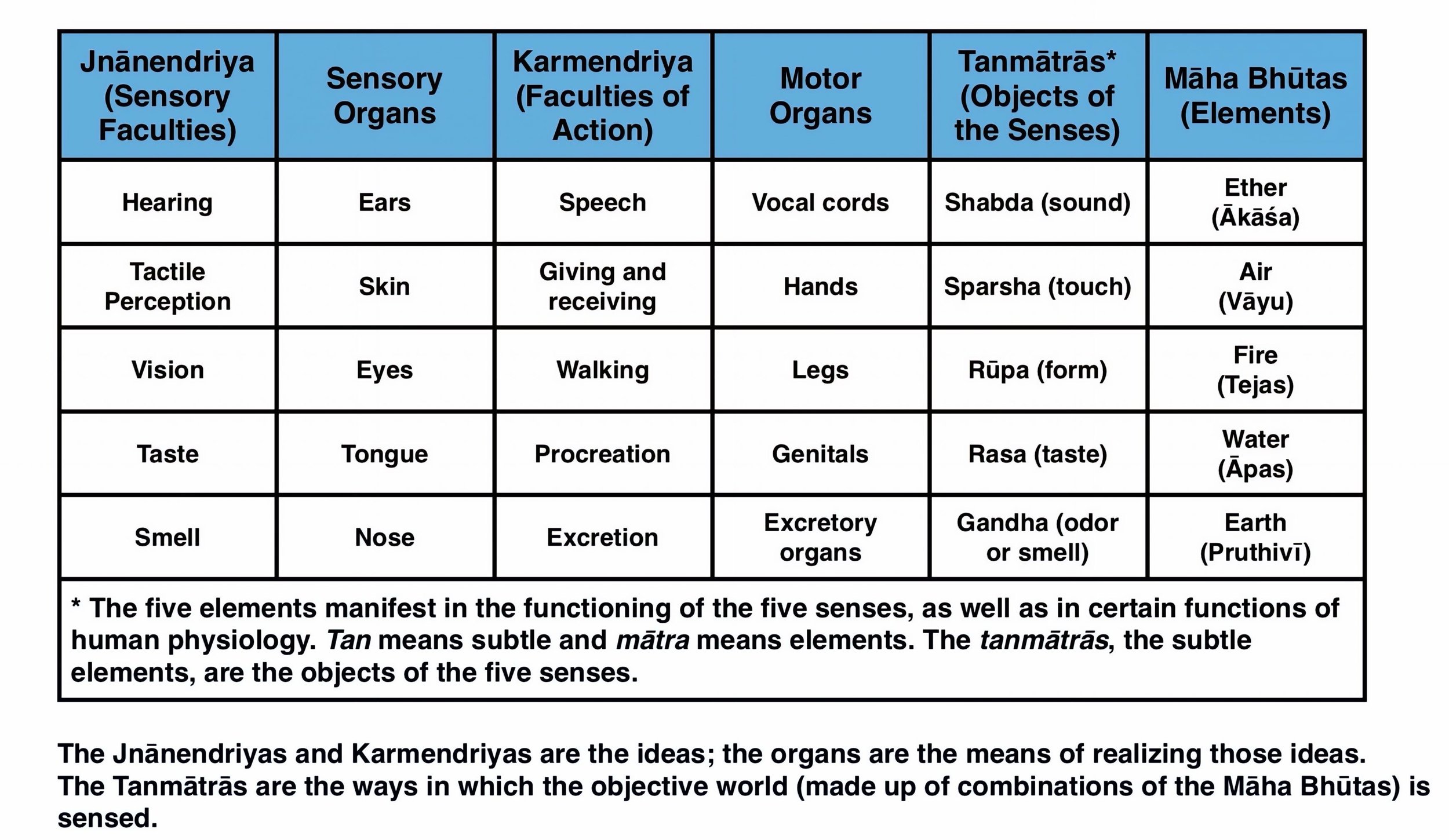ṢAḌ DARŚAN: THE SIX PHILOSOPHIES OF LIFE
Philosophy / Founder
Saṅkhya----Kapila
Nyaya----Gautama
Vaisheshika----Kanada
Mimamsa----Jaimini
Yoga----Patañjali
Vedanta----Badarayana
Traditionally, six schools of thought propagated Vedic wisdom, each from a different philosophical perspective. Each of these perspectives or darshanas is associated with a sage who is the author of a sutra expressing the essence of his darshana. Āyurveda incorporates all six philosophies, with a special focus on Sankhya.
Sankhya, Nyaya, and Vaisheshika predominantly deal with the material world. These three paradigms form a natural grouping for understanding the physical universe. Logical reasoning, understanding cause and effect, or experiences one can reduce to cause and effect, are the focus of Nyaya. Sankhya states that we need to consider the origin of the world. Moreover, it is important to see how the theme of microcosm and macrocosm (as above, so below) plays out. Physiology is expressed as a model of evolving Consciousness. Vaisheshika is focused on the level of the physical world without concern for what created it. It is really more a model of physics and particle interactions.
The other three ‐‐ Yoga, Mimamsa, and Vedanta ‐‐ observe inner reality as an attempt to to understand outer reality. Their emphasis is on how we evolve.
The Māha Guṇas
Sattva-Rajas-Tamas
The three influential principles which regulate and govern environmental and biological processes emanate from the field of primordial nature and pervade the universe. They are qualities of cosmic forces with attributes. The Sanskrit word used to designate them is guṇa (an influence that regulates cosmic forces).
Manas prakruti (the mental constitution) is described in terms of the three māha gunas.
Sattva (sat, is-ness, truth, being) guṇa is the force of equilibrium expressive as, purity, harmony, balance, happiness, virtue, and knowledge.
Rajas (raj, to glow, to be dynamically active) guṇa is the force of energy and motion expressive as passion, action, contention, and desire.
Tamas (tam, to decline or perish) guṇa is the force of inaction, darkness, inertia, and obscurity.
Sattva guṇa contributes to mental illumination, general well-being, easy ability to appropriately adapt to circumstances, clarity of purpose, appreciation of order, refinement of the body and personality, and progressive spiritual growth.
tatra sattvaṁ nirmalatvāt prakāśakam anāmayam, sukha saṅgena badhnāti jñāna saṅgena cānagha.
Of these, sattva, free from impurity and disease, illuminating, binds through attachment to virtue and by attachment to knowledge, Arjuna.
Rajas guṇa contributes to goal-oriented endeavor, resistance to contrary conditions, attempts to dominate, assertion of will, and inclination to create and aspire.
rajo rāgātmakaṁ viddhi tṛṣṇā saṅga samudbhavam, tan nibadhnāti kaunteya karma saṅgena dehinam.
O Arjuna, know that rajas is characterized by passion, arising from desire and attachment. It binds the Embodied One (the Ātman) by attachment to action.
Tamas guṇa contributes to clouded mental faculties, confusion, delusion (false or invalid beliefs and opinions), illusion (misperception), emotional heaviness, laziness, dullness, indifference to change and new experiences, and unconsciousness. It opposes the influences of both sattva guṇa and rajas guna.
tamas tvajñānajaṁ viddhi mohanaṁ sarvdehinām, pramādālasya nidrābhis tan nibadhnāti bhārata.
Know, O Arjuna, tamas is born of ignorance, confusing all embodied beings. Through distraction, sleep, and laziness, it binds.
All of the qualities of nature somewhat restrict the soul's expression because of their tendency to exert influence. Tamas restricts through negligence, errors of perception and behavior, and inaction, thus suppressing knowledge and contributing to the false sense of independent consciousness. Rajas encourages vanity and egocentric ambition, strong desire, perverted behaviors, and attachments and aversions. Sattva restricts because, even though one may be motivated by idealism, self-conscious inclinations toward acquiring virtue and knowledge as ends in themselves may prevail.
sattvam rajas tama iti guṇāh prakruti sambhavāh,
nibhadnanti mahābāho dehe dehinam avyayam.
The qualities born of material nature: sattva, rajas, and tamas,
bind the Imperishable Embodied One (the ātman) in the body, O Arjuna!
(from the Bhagavad Gītā)
Reference 'Life Surrendered In God: The Kriya Yoga Way of Soul Liberation'
by Roy Eugene Davis for expanded study and insight. ISBN 0-87707-246-9
The Senses and The Elements
The Jnānendriyas and Karmendriyas are the ideas; the organs are the means of realizing those ideas.
The Tanmātrās are the ways in which the objective world (made up of combinations of the Māha Bhūtas) is sensed.





